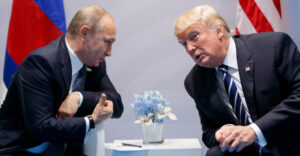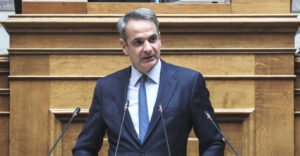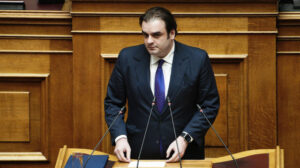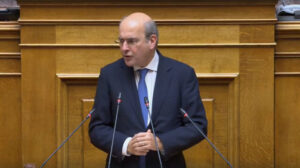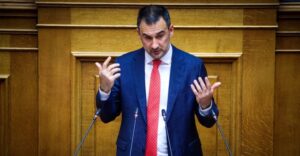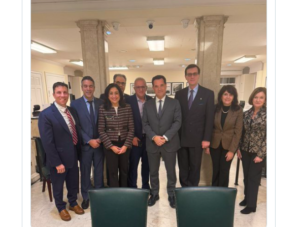The 47th President of the USA, Donald Trump, from January 20, when he will officially enter for a second term in the White House, will have in front of him many, the truth is, open fronts that require beyond management and special handling and for the which has already promised to settle them within hours or a few days. Trump in his election campaign against Kamala Harris, who admittedly had completely different characteristics, than the one the newly elected President and his staff had built with Joe Biden, pledged that the two main war fronts would be a thing of the past.
If for the Middle East Trump has made it clear with the moves he has already announced to fill critical positions in his Government that Israel will have absolute control and his non-negotiable personal support, for the war in Ukraine which has been going on for almost three years the next President of the USA has revealed little information. One of them is that for him it is a priority and that the war on Ukrainian lands will end within 24 hours. In the persistent questions from journalists about his plan he noted: “I cannot reveal the plan to you because if I do I will lose the main advantage in the negotiations.”
The main, although not only, question today is whether it is possible not to end the war in Ukraine in one day, but to end it in general. The data on the Russo-Ukrainian conflict are anything but simple and few. The involvement of third parties, also in a direct and indirect way, has now created a new type of “curtain” between East and West with the US-Russia dipole re-emerging strongly as in the first post-war years in Europe. The interpersonal relations between Trump and Putin are given a piece of paper that Joe Biden never had and fatally could not use, but this in no way can prejudge a “solution” to an issue that is light years away from a simple friendly or interpersonal relationship…
The fields data
To get a more accurate picture of the magnitude of the issue with the war in Ukraine it is good to have a detailed picture of the conditions today on the battlefields. In the east, Ukrainian forces have lost most of the Donbas valley, lost the key port of Mariupol in the first year of the war – the country’s only outlet to the Sea of Azov – and failed in the second year of the war to strike back in a way that would bring back some of the 20% of Ukrainian territory currently under Russian control – though not absolute. The resistance to the first fierce – albeit blind – wave of the Russian attack was a gain for the Ukrainians, the victory in Kherson that ensured at least that the western part of the Dnieper River would remain exclusively Ukrainian, but also the great victory in the extremely critical industrial “heart” of country, Kharkiv, which not only resisted the successive Russian strikes, but also formed the nucleus within which the plan for the Ukrainian invasion of the Russian province of Kursk was structured – planned and finally implemented.
Given the fact that the forces of Kiev have managed to keep the large port of Odessa open and mainly Ukrainian, it is also a profit both economically and militarily as from this point they have won over Russia at sea. With the above summary it is easy to understand that the battles are multi-level – even if they have mutated – but essentially the fronts are consolidated and there can hardly be expansion or dominance for either side – not at least at a level that completes the common expressed “narrative” of victory.
The political facts
The war in Ukraine can realistically end in four ways. With Russia’s victory, with Ukraine’s victory, through diplomacy or with a bigger war – perhaps World War III which is a “taboo” for some and a realistic scenario for others. It is a fact that if anyone can manage all four possibilities, it is the current American President. It was Joe Biden’s choice as soon as he took office in 2021 to proceed with bilateral discussions on the neutral territory of Switzerland with Vladimir Putin, effectively giving him an “ultimatum” not to go to war with Ukraine.
The move did not work, but Joe Biden and his own Government have not left Kiev alone and have managed to rally – despite the major objective problems – all the important powers of the West to this specific purpose.
Ukraine, despite the enormous sacrifice of its people, has held its ground and is resisting the “second largest army in the world”. Donald Trump clearly has a different strategy than both Joe Biden and the Democrats. His own narrative is that there should be no wars. Trump’s war of temper and political logic is seriously hurting the economy, and that to him is bad in itself. How he will attempt to prevent further escalation in the fields and how he will stop supporting Ukraine economically and militarily, which given the fact that he has no inclination to give even an inch of land to the Kremlin in the end, will be an extremely difficult scheme. Trump also has an “unorthodox” for “orthodox” diplomacy way of handling critical international situations and crises. If we take for granted the way in which he came into contact with Kim Jong Un and the relationship that the two have developed since then, it cannot be ruled out that the new US President will attempt a similar trip to Moscow as well. However, the balance is completely different today and such a message is very likely to create diverse and difficult to control reactions. Europe, which also plays an important political-diplomatic-military and economic role in the Ukraine war, would for example be “alone” with the rest of NATO looking at the American President discussing with the Russian President an issue that is of pivotal importance and for its own existence and next day. Trump may have a “business-economic” perspective on all matters – domestic and foreign – but he is well aware that balances are critical especially if they end up serving his own purpose.
Russia
Donald Trump may want to immediately stop the war in Ukraine, but it is a given that this cannot happen without the consent of Russia, which on February 24, 2022, invaded Ukrainian territory from five different points. Vladimir Putin has faced unpleasant – extremely unpleasant even extremely unpleasant surprises in three years and has survived…
The Russian President has faced the biggest sanctions ever imposed on a country, he has even faced a coup by his right-hand man and head of Wagner, he has lost thousands of soldiers in the fields, he has failed to take Kiev within three days and Zelensky’s “head” but in no case will he back down in the face of a “friendly” pat on the back from Donald Trump.
It is also clear that Russia in order to discuss anything regarding the end of the war in Ukraine will ask for tangible guarantees if not a victory something resembling a victory and that can be nothing other than keeping the territories it already has occupy and constitute approximately 20% of the Ukrainian territory and in addition there should be a clear recognition of the Russian ownership of the Crimean peninsula which Russia has owned since 2014. In above “package” of claims data Russia will demand a written commitment that Ukraine will not become Russia’s most hostile NATO member and that there will be partial disarmament. The above are not guesses, but facts that the Kremlin has openly put on the table for Putin to sit opposite Zelesny… The Trump staff will have its own proposal, only that this issue will be very difficult to resolve within 24 hours…
The Ukraine
Volodymyr Zelensky has in writing brought to the attention of his allies and personally of President Trump himself during their last meeting in the USA the so-called “victory plan” of Ukraine. Donald Trump has also officially already spoken to the Ukrainian President, and despite loud “vocals” even from his own family, Donald Trump seems to have most of the image of the Ukrainians. His own Government will hardly continue to support Ukrainian economic and military needs, even through a different “channel”, until at least he is faced with the deadlock and intransigence of one of the two sides.
For Trump, the powerful card in Zelensky’s hands is the small but pivotal area that the Ukrainians have under their control since last August in the province of Kursk. Trump seems to believe that these 1,300 square kilometers can play an important role. The Russians do not seem to openly embrace this view and will demand nothing less than a Russian withdrawal. Trump has seen a gap – even a marginal one – between Kiev and Moscow and believes he has the tools to exploit it. Maybe the odds are not on his side but it has been proven in the past that even when he loses he does it his way. Kiev will demand the withdrawal from the Donbass Valley and Mariupol in exchange, while putting Crimea on the table. Zelensky will insist that NATO and the EU are the only security path for Ukraine, and it is possible that he will speak the language of “effective investments” with Trump.
The “openings” of the American economy and the problems of Europe
For Trump, any war in which the US is involved is a loss – direct and indirect – of money. The same is happening with the war in Ukraine. For Trump the more than 175 billion dollars that Washington has given in total to Kiev are lost investments. Trump is well aware that he will continue to support Ukraine, he may just try to turn this support into something that will ultimately benefit the US. It is impossible today to find a way for the White House to take back this capital and weapons systems from a country that is realistically on the verge of impoverishment. It is also difficult for Donald Trump, even if he says so directly, to choose to “strangle” the Ukrainians by stopping the shipment of weapons. What he may have in mind is to stop supporting them so actively himself and not Europe accordingly.
According to Trump, Germany and France should share with Great Britain more proportionally the needs of Ukraine. Today, compared to the European Union, the USA has given three times as much aid to Kiev, and this is, as the Americans say, a “no go situation” for the business-minded President of the country. It is not excluded that Trump will threaten the Union in the same way that he did with the members of NATO and the percentage of their assistance in the North Atlantic alliance. He himself has openly stated that if he doesn’t like the contribution to organizations with “cloudy” – in the same context – he doesn’t like to be considered as the cow from which they will all take milk without paying… Diplomatically, he can after all Trump may not be able to solve the Ukrainian problem, but he will manage to apportion – to throw away – most of the mainly economic responsibilities. Europe, being already in dire straits already with Germany constantly recording a decrease in its GDP without Russian gas and France with given political-social and economic issues, must within 70 days find the critical information from the US but and the now-required consensus to create a common – Hungary-style leak-free – deal plan with Trump, not Putin. If Trump’s demands go beyond the limits of the given Union, the problem will escape to an extent that will be difficult to deal with – given the “shortage” of political personnel that exists on our own continent…
Is there a case after all?
The easy answer is clearly “no”, but Trump is neither simple nor easy to read (see also the pollsters in the US who since 2016 have failed even once). The new US President will clearly use his own channels and practices, it is possible that he will have “papers” to which neither Moscow nor Kiev will have an answer. It is extremely difficult for Donald Trump to end such a crisis – which has deep and mainly structural ethnic characteristics and has given birth to a deep hatred corresponding to the national consciousness he has forged in a country that has ignored it since 1986. What he is capable of doing is turning this crisis into an opportunity for himself and the interests of his country. The election of Trump should have – justifiably – alarmed the entire Union system, in Brussels and Strasbourg, as well as NATO, as the 47th American President, if he does not get what he wants, will not hesitate to test the endurance of these institutions in an extreme way . The point is that these strengths have already been tested for some time and it is not unlikely that there will be strongly disruptive trends.
Ask me anything
Explore related questions
